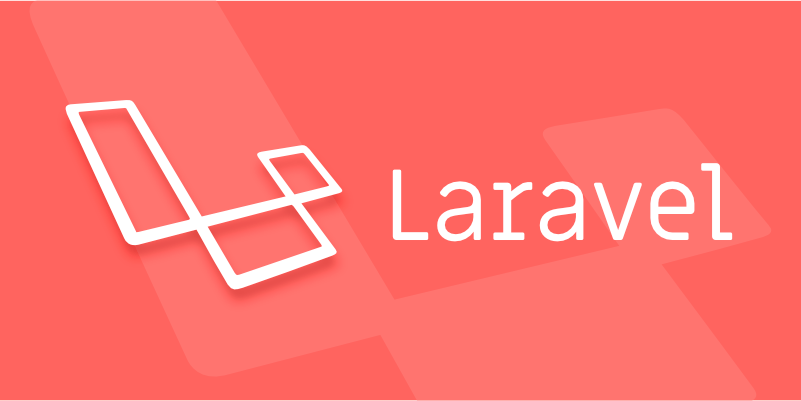Five key points to be noted when deploying Laravel applications to production servers: First, configure the .env file, set APP_ENV to production, APP_DEBUG to false, and run the config:cache, route:cache and view:cache commands to optimize performance; Second, configure Nginx or Apache correctly to ensure that the root directory points to public and hide sensitive paths; Third, set storage and bootstrap/cache directory permissions, generate application keys, and close debug output; Fourth, use Supervisor to manage queue processes to ensure continuous operation of tasks; Fifth, check that all steps are not omitted, especially cache, permissions and security settings, to ensure application stability and security.

Deploying Laravel applications to production servers is not difficult, but some key points must be paid attention to. Many people think that passing the code up and configuring the database is done. In fact, there are still some details that may bring performance problems or even security risks if not handled properly.

Configuring .env and cache optimization
Before the Laravel project is launched, you must ensure that the .env file is configured correctly, especially if APP_ENV is set to production , APP_DEBUG must be false to avoid exposing sensitive information.

Also, don't forget to run the following command to optimize application performance:
-
php artisan config:cache -
php artisan route:cache -
php artisan view:cache
These commands compile configuration, routes, and views into cache files, greatly improving loading speed. If you use a queue or schedule a task, also confirm that the relevant service has been started and configured correctly.

Web server configuration (Nginx or Apache)
Most production environments use Nginx to host Laravel, and you need to configure a site that points to public/ directory. Taking Nginx as an example, the basic configuration is as follows:
server {
listen 80;
server_name yourdomain.com;
root /path/to/your/laravel/public;
index index.php index.html index.htm;
location / {
try_files $uri $uri/ /index.php?$query_string;
}
location ~ \.php$ {
include snippets/fastcgi-php.conf;
fastcgi_pass unix:/var/run/php/php-fpm.sock;
}
location ~ /\.ht {
deny all;
}
} This configuration ensures that all requests are processed through public/index.php , while hiding other directories to improve security. Apache users can also do similar settings, with the focus on getting the root directory to point to public instead of the entire Laravel project.
File permissions and security settings
Many deployment problems are in permissions. Make sure your storage and bootstrap/cache directories are writable to users running PHP. Usually the following commands can be executed:
-
chmod -R 775 storage bootstrap/cache -
chown -R www-data:www-data storage bootstrap/cache(assuming you are using Ubuntu Nginx)
Also, don't forget to generate the application key ( php artisan key:generate ), otherwise the encryption function will not work properly. Also, close the debug page output to prevent error information from leaking paths or database structures.
Use Supervisor to manage queue processes (if any)
If you use a Laravel queue system, such as Redis or a database-driven task queue, it is recommended to use Supervisor to manage queue consumer processes. Supervisor can automatically restart the crashed worker and keep the queue running continuously.
You can create a configuration file like /etc/supervisor/conf.d/laravel-worker.conf like this:
[program:laravel-worker] process_name=%(program_name)s_%(process_num)02d command=php /path/to/your/laravel/artisan queue:work --sleep=3 --tries=3 autostart=true autorestart=true user=www-data numprocs=4 redirect_stderr=true stdout_logfile=/path/to/your/laravel/storage/logs/worker.log
Then run supervisorctl reread and supervisorctl start laravel-worker:* to start the queue process.
Basically that's it. Deploying Laravel is not complicated, but it is easy to ignore some details, especially caching, permissions, and security aspects. As long as you check it step by step, there will basically be no major problems.
The above is the detailed content of Deploying a Laravel Application to a Production Server?. For more information, please follow other related articles on the PHP Chinese website!

Hot AI Tools

Undress AI Tool
Undress images for free

Undresser.AI Undress
AI-powered app for creating realistic nude photos

AI Clothes Remover
Online AI tool for removing clothes from photos.

Clothoff.io
AI clothes remover

Video Face Swap
Swap faces in any video effortlessly with our completely free AI face swap tool!

Hot Article

Hot Tools

Notepad++7.3.1
Easy-to-use and free code editor

SublimeText3 Chinese version
Chinese version, very easy to use

Zend Studio 13.0.1
Powerful PHP integrated development environment

Dreamweaver CS6
Visual web development tools

SublimeText3 Mac version
God-level code editing software (SublimeText3)

Hot Topics
 What are routes in Laravel, and how are they defined?
Jun 12, 2025 pm 08:21 PM
What are routes in Laravel, and how are they defined?
Jun 12, 2025 pm 08:21 PM
In Laravel, routing is the entry point of the application that defines the response logic when a client requests a specific URI. The route maps the URL to the corresponding processing code, which usually contains HTTP methods, URIs, and actions (closures or controller methods). 1. Basic structure of route definition: bind requests using Route::verb('/uri',action); 2. Supports multiple HTTP verbs such as GET, POST, PUT, etc.; 3. Dynamic parameters can be defined through {param} and data can be passed; 4. Routes can be named to generate URLs or redirects; 5. Use grouping functions to uniformly add prefixes, middleware and other sharing settings; 6. Routing files are divided into web.php, ap according to their purpose
 What are policies in Laravel, and how are they used?
Jun 21, 2025 am 12:21 AM
What are policies in Laravel, and how are they used?
Jun 21, 2025 am 12:21 AM
InLaravel,policiesorganizeauthorizationlogicformodelactions.1.Policiesareclasseswithmethodslikeview,create,update,anddeletethatreturntrueorfalsebasedonuserpermissions.2.Toregisterapolicy,mapthemodeltoitspolicyinthe$policiesarrayofAuthServiceProvider.
 How do I create new records in the database using Eloquent?
Jun 14, 2025 am 12:34 AM
How do I create new records in the database using Eloquent?
Jun 14, 2025 am 12:34 AM
To create new records in the database using Eloquent, there are four main methods: 1. Use the create method to quickly create records by passing in the attribute array, such as User::create(['name'=>'JohnDoe','email'=>'john@example.com']); 2. Use the save method to manually instantiate the model and assign values ??to save one by one, which is suitable for scenarios where conditional assignment or extra logic is required; 3. Use firstOrCreate to find or create records based on search conditions to avoid duplicate data; 4. Use updateOrCreate to find records and update, if not, create them, which is suitable for processing imported data, etc., which may be repetitive.
 How do I run seeders in Laravel? (php artisan db:seed)
Jun 12, 2025 pm 06:01 PM
How do I run seeders in Laravel? (php artisan db:seed)
Jun 12, 2025 pm 06:01 PM
Thephpartisandb:seedcommandinLaravelisusedtopopulatethedatabasewithtestordefaultdata.1.Itexecutestherun()methodinseederclasseslocatedin/database/seeders.2.Developerscanrunallseeders,aspecificseederusing--class,ortruncatetablesbeforeseedingwith--trunc
 What is the purpose of the artisan command-line tool in Laravel?
Jun 13, 2025 am 11:17 AM
What is the purpose of the artisan command-line tool in Laravel?
Jun 13, 2025 am 11:17 AM
Artisan is a command line tool of Laravel to improve development efficiency. Its core functions include: 1. Generate code structures, such as controllers, models, etc., and automatically create files through make: controller and other commands; 2. Manage database migration and fill, use migrate to run migration, and db:seed to fill data; 3. Support custom commands, such as make:command creation command class to implement business logic encapsulation; 4. Provide debugging and environment management functions, such as key:generate to generate keys, and serve to start the development server. Proficiency in using Artisan can significantly improve Laravel development efficiency.
 How do I install Laravel on my operating system (Windows, macOS, Linux)?
Jun 19, 2025 am 12:31 AM
How do I install Laravel on my operating system (Windows, macOS, Linux)?
Jun 19, 2025 am 12:31 AM
Yes,youcaninstallLaravelonanyoperatingsystembyfollowingthesesteps:1.InstallPHPandrequiredextensionslikembstring,openssl,andxmlusingtoolslikeXAMPPonWindows,HomebrewonmacOS,oraptonLinux;2.InstallComposer,usinganinstalleronWindowsorterminalcommandsonmac
 How do I define methods (actions) in a controller?
Jun 14, 2025 am 12:38 AM
How do I define methods (actions) in a controller?
Jun 14, 2025 am 12:38 AM
Defining a method (also known as an action) in a controller is to tell the application what to do when someone visits a specific URL. These methods usually process requests, process data, and return responses such as HTML pages or JSON. Understanding the basic structure: Most web frameworks (such as RubyonRails, Laravel, or SpringMVC) use controllers to group related operations. Methods within each controller usually correspond to a route, i.e. the URL path that someone can access. For example, there may be the following methods in PostsController: 1.index() – display post list; 2.show() – display individual posts; 3.create() – handle creating new posts; 4.u
 How do I run tests in Laravel? (php artisan test)
Jun 13, 2025 am 12:02 AM
How do I run tests in Laravel? (php artisan test)
Jun 13, 2025 am 12:02 AM
ToruntestsinLaraveleffectively,usethephpartisantestcommandwhichsimplifiesPHPUnitusage.1.Setupa.env.testingfileandconfigurephpunit.xmltouseatestdatabaselikeSQLite.2.Generatetestfilesusingphpartisanmake:test,using--unitforunittests.3.Writetestswithmeth






